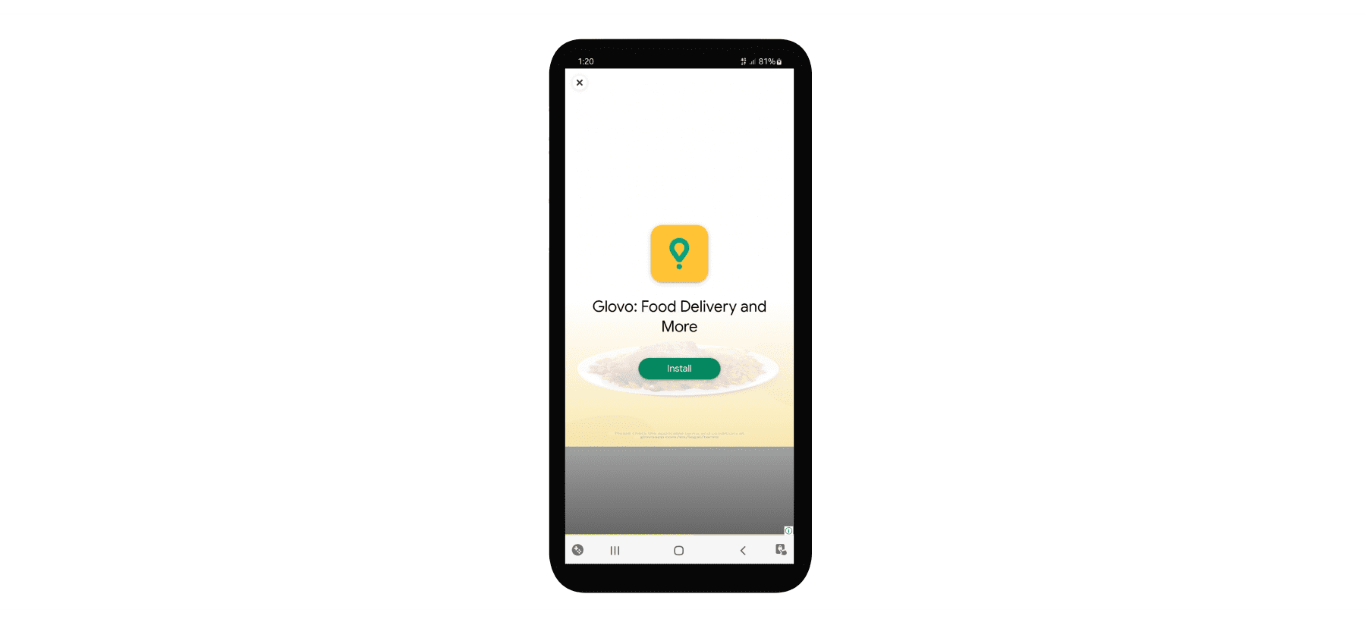What is an Interstitial Ad?
Interstitial ads are full-screen advertisements that appear within mobile apps or websites. They are typically displayed at natural transition points, such as between levels in a game or after completing a task. They can also be displayed when the user performs specific actions like clicking a button or scrolling to a certain point on a page.
Interstitial ads block out the website or app’s content, making it inaccessible until the user closes the ad or clicks on its call to action.

Interstitial ads are designed to capture the user’s attention without interrupting their browsing experience. However, they can still be disruptive if implemented improperly and will harm the site’s user experience.
SEO Impact of Interstitial Ads
Interstitial ads can harm a site’s user experience. For one, they can make it difficult or even impossible for visitors to engage with a site or app. Even a limited number of interstitial ads can quickly disrupt the content’s flow, leaving visitors overwhelmed and frustrated.
Some visitors may also be confused the moment they encounter an interstitial ad. This gets worse with interstitials that do not display an option to close the ad until after a few seconds. Some ads also change the location of their close button, which would further confuse the user.
This negative experience can drive visitors away from the content and increase the site’s bounce rate. A high bounce rate signals to search engines that users are not finding the content valuable, potentially leading to a decline in SEO rankings over time.
Furthermore, interstitial ads can erode trust between a site and its audience. They are generally considered spammy and may cause visitors to question your site’s integrity, particularly when they appear repeatedly.
Interstitial SEO Best Practices
The user experience should always take priority with interstitial ads. So, to ensure that the ads enhance rather than disrupt the site or app, it is recommended to follow the best practices listed below.
1 Do Not Display Interstitials on Arrival
Displaying interstitials immediately upon arrival can be perceived as intrusive and may lead to higher bounce rates. Instead, consider showing them after the user has interacted with your site for a certain period. This approach allows visitors to appreciate your content first, increasing the likelihood of engagement.
2 Ensure Your Interstitials Are Easy to Close
Your interstitial ads must have a clear and accessible close button. If users struggle to dismiss an interstitial, it can lead to frustration and a negative perception of your site. So, include a close option and make sure it is prominently displayed and easy to find.
3 Use Non-Intrusive Ad Formats When Possible
Consider using non-intrusive interstitial ad formats like banners or slide-ins when possible. These ad formats do not obstruct the main content, which makes them less overwhelming than full-page interstitial ads. Such alternative ad formats are also less likely to disrupt your visitor’s user experience.
4 Use Interstitials on Specific Pages Instead of Site-Wide
Rather than applying interstitial ads across your entire site, focus on specific pages where they would be most relevant. For example, interstitials will be more relevant on high-traffic pages and landing pages and less important on About and Service pages, where their appearance may even hurt your conversions.
5 Optimize Your Interstitials for Mobile Devices
Your interstitial ads must be mobile-friendly. Ensure to optimize their size and layout to fit smaller screens. They should only contain the necessary content to avoid overwhelming your users. When possible, test how the interstitial displays on different devices.
6 Adhere to Search Engine’s Guidelines on Interstitials
Search engines and app stores typically have guidelines that they expect apps and sites that use interstitial ads to follow. Make sure to familiarize yourself with those guidelines to ensure your site or app remains compliant and avoids penalties.
7 Include Clear Calls-to-Action in Your Interstitials
When using interstitials as part of your lead generation strategy, ensure to use clear and compelling calls to action that guide users toward the next step you want them to take. The call to action should stand out and communicate the link’s destination.
8 Test How Your Interstitials Impact Your Users
Review how your interstitial ads affect your site and users. Analyze crucial user engagement metrics like bounce rates, time spent on page, conversion rates, and click through rates. You may even run A/B tests to compare different ad formats or messages to determine which works best for your audience.